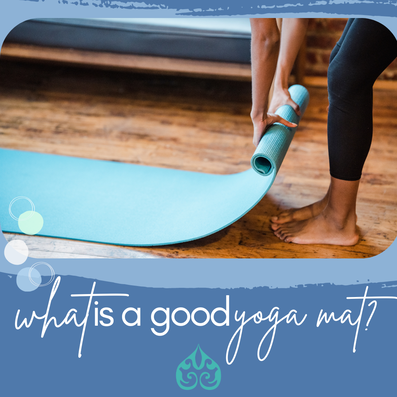|
Wherever you decide to practice yoga, your surroundings will always compliment you. Assisting your practice by investing in the right yoga mat will provide more comfort, safety, and an element of personalization. Working on a towel, or rug may not be the right feel, and certainly not the safest option Ensuring you find the right elements to praise your body will
increase your stability and promise a more enjoyable practice. Searching for the perfect yoga mat can consist of many different factors – your lifestyle, budget, values, and practice. Let’s dive in and identify some key factors to help you choose what’s right for you. Thickness Yoga mat consistency can range from 1/16 inch to about 1/4 inch in thickness. Depending on what style yoga you choose to practice, the type of mat will help amplify your yoga experience. Thinner mats assist with stability for specific styles of yoga that may include active and focused poses. The increased connection to the floor secures your balance, however, the downside is you if you experience knee sensitivity this may ache during certain poses like tabletop or camel pose. Thicker mats will provide lots of cushion. Restorative yoga, and therapeutic practices are largely complimented with this type of mat, providing extra padding for your joints, and knees to avoid unnecessary tension. Just as a reminder though, you likely will have some difficulty balancing during standing poses and it may not be ideal for power fit, or standing poses. Weight How much storage space do you have? Do you mind carrying a heavier mat? All these can also factor in on what mat is best for you. If you can accommodate the storage, and don’t mind carrying around a bit of weight, considering a 1/4-inch-thick yoga mat. If you are a travelling yogi, and absolutely can’t afford the storage or extra weight, maybe a travel yoga mat is right for you! Material and Texture How long will my mat last? What will provide the best grip? Any eco-friendly options? Great questions. This is all dependant on the material and texture mat you choose. Many different factors such as price, grip, and weight, play a big role in the kind of mats that are available for purchase. PVC mats are plastic-based and provide excellent durability, easy clean-up, and great floor grip (super sticky). Keep in mind, this material is non-absorbent. Why does that matter? Well, it can become quite slippery during your heavy sweat sessions. TPE (thermoplastic elastomer) mats are a blend of rubber polymers and plastic. It provides good traction and are more environmentally friendly (they can be fully recyclable!). In comparison to the PVC mat, its durability is certainly less. Eco/natural mats can be natural rubber, jute, and organic cotton. It will provide excellent traction, tops the list for sustainability (if that is a priority for you). Bear in mind, it does lack durability and doesn’t provide as much grip to the floor. Make sure to pick what’s right for you! Securing a connection with your body and providing support and comfort will encourage your practice tremendously.
0 Comments
Leave a Reply. |
Archives
June 2024
Categories |


 RSS Feed
RSS Feed